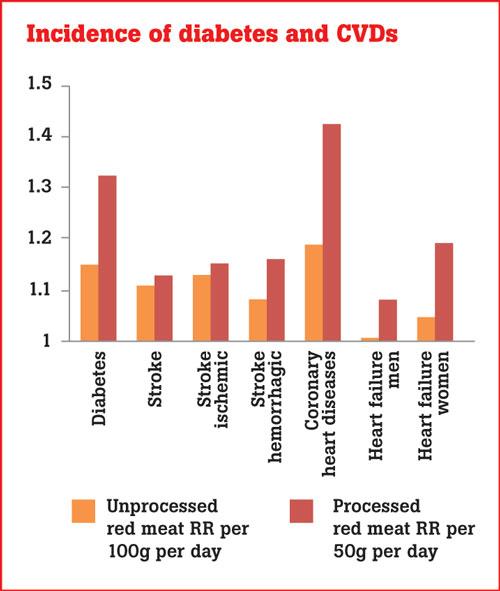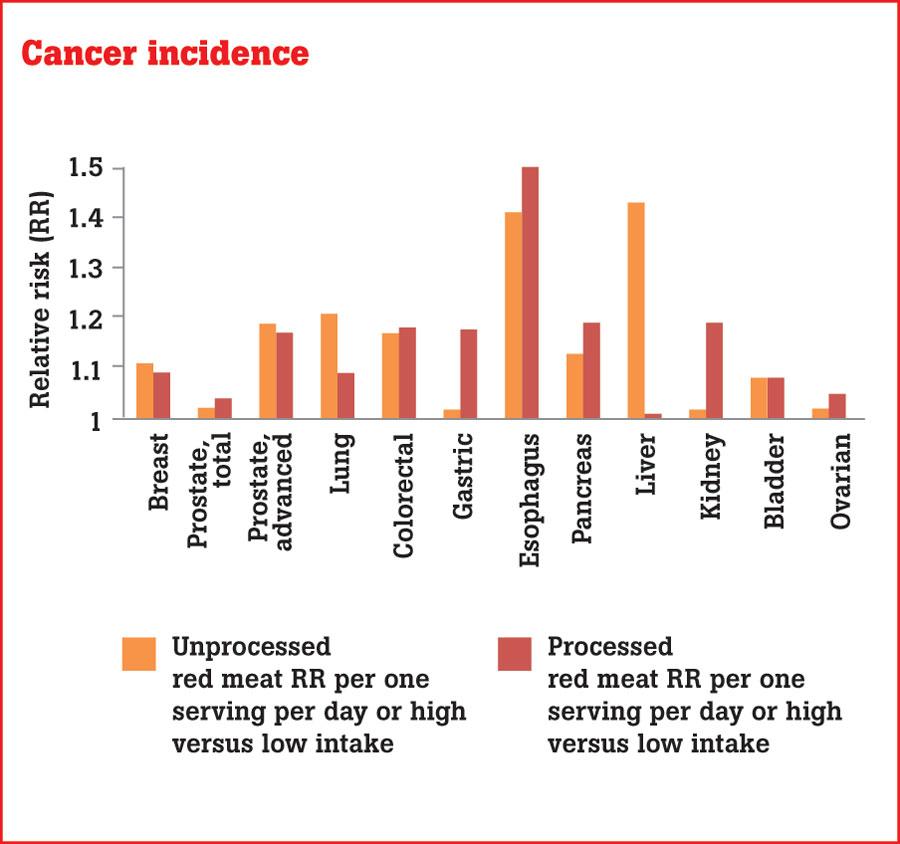Reply To:
Name - Reply Comment

 According to the Department of Animal Production and Health, the livestock sector of Sri Lanka recorded a 3.9% growth during 2017. Meat is one of the main sources of protein for Sri Lankan consumers, especially for children. Meats provides Vitamin A, B, D, B-6 and also essential minerals such as sodium, potassium and fats that are beneficial for the body. There are two types of meats namely white meat and red meat. White meat is poultry and light-colored meat while red meat is the flesh from animals that have a higher proportion of myoglobin; which is heme iron containing protein that stores oxygen in muscle cells. Beef, goat, lamb and pork are examples for red meat.
According to the Department of Animal Production and Health, the livestock sector of Sri Lanka recorded a 3.9% growth during 2017. Meat is one of the main sources of protein for Sri Lankan consumers, especially for children. Meats provides Vitamin A, B, D, B-6 and also essential minerals such as sodium, potassium and fats that are beneficial for the body. There are two types of meats namely white meat and red meat. White meat is poultry and light-colored meat while red meat is the flesh from animals that have a higher proportion of myoglobin; which is heme iron containing protein that stores oxygen in muscle cells. Beef, goat, lamb and pork are examples for red meat.
Significant benefits of red meat
Most of misapprehended benefits of red meat are the cholesterol, high protein and saturated fat content, having several vital nutrients such as essential amino acids, vitamins (B12) and minerals (iron and zinc) , which are essential for the growth and development of the human body.
Red meat production in Sri Lanka during 2017
Red meat occupies a significant portion of total dietary intake in many populations and it has been increasing worldwide, mainly in developing countries.
Source: Department of Animal Production and Health
Types of red meat
There are two types of red meat; processed and unprocessed red meat. Processed red meat undergoes several preservative treatment such as curing, smoking, salting or the use of chemical preservatives and additives in order to improve its shelf life and other food sensory properties (flavour, colour, tenderness, juiciness and cohesiveness). Ham, sausages, bacon, frankfurters and salami are few examples for processed red meat.
Sri Lankan processed meat industry produces a variety of meat products under three main categories; comminuted meat products (sausage, luncheon meats, and hot dogs), cured meat products (bacon and ham) and formed meat products (nuggets, meat fingers, drumsticks). Processed red meat usually has more sodium and nitrites/nitrates than unprocessed red meat.
Source: Department of Animal Production and Health
Red meat is an important source of protein and other several essential nutrients. However, at the same time, there has been growing evidence that the frequent consumption of red meat, especially of processed meat, may be associated with potentially adverse health effects including several major chronic diseases such as type 2 diabetes mellitus, cardiovascular disease, cancer and also increased mortality risk.
Health risks associated with processed and unprocessed red meat consumption

The most recent studies have shown an increased risk of type two diabetes associated with the consumption of red meat specially processed meat, due to the presence of insulin resistance such as branched amino acids (leucine, isoleucine and valine ), Saturated fatty acids and cholesterol. In addition red meat is the main source of heme iron which may contribute to increased T2DM risk by increasing the glucose production and decreased glucose utilization. Research finding concluded that a diet high in red and processed meat before pregnancy has significantly associated with an increased risk of gestational diabetes. Furthermore, processed meat contains more nitrates and nitrites in order to preserve and these ions converted to nitrosamines by binding to amino compounds within the food or in the stomach while this nitrosamines are toxic to pancreatic ᵦ-cells. As a result of that decreased insulin secretion, the risk of type two diabetes increases.
Most recent studies suggest that both unprocessed and processed red meat consumption positively associated with an increased risk of stroke, coronary heart disease and heart failure. Phosphatidylcholine and L-carnitine present in red meat have been reported to be associated with coronary heart disease. In the intestine, phosphatidylcholine is broken down in to choline, which is then transformed to trimethylamine by anaerobic microorganisms in the intestine, and eventually, it is metabolized to trimethylamine N-oxide. Studies have investigated the association between fasting plasma trimethylamine N-oxide concentration and incident of cardiovascular disease amongst men. Furthermore, a high concentration of trimethylamine N-oxide was a significant predictor of the risk of death, myocardial infarction or stroke over 3 years.
Most animal studies have indicated that red and processed meat intake appears to be positively associated with risk of cancer of the colon and rectum, sophagus, liver, lung, and pancreas. Research has discovered that meat and edible offal have contributed approximately 8% of total dietary exposure to cadmium. Moreover, residues of antibiotics and hormones used during production are also included in red meat. Additionally haeme, one of the major components of red meat has been playing a role in cancer development. Free ferrous iron is released from haeme and iron itself plays a role in the increased production of reactive oxygen species, especially hydrogen peroxide which may further induce inflammation, cytotoxic effects and genetic mutations. Furthermore, cooking practices of meat at high temperatures such as pan frying and barbecuing may lead to the production of heterocyclic amines, which increase cancer risk in humans. Polycyclic aromatic hydrocarbons, which is also considered as carcinogenic and genotoxic, are produced during cooking at high temperatures over an open flame, grilled or barbecued meats. In conclusion, frequent consumption of red meat especially processed red meat, is associated with the increased risk of several major chronic diseases and mortality even if it has significant nutritional benefits on our health. Therefore, we need to feed always on fresh, chemical free vegetables and fruits to get into a healthy lifestyle.
